Rank Genus | Phylum Echinodermata Subfamily Cothurnocystinae | |
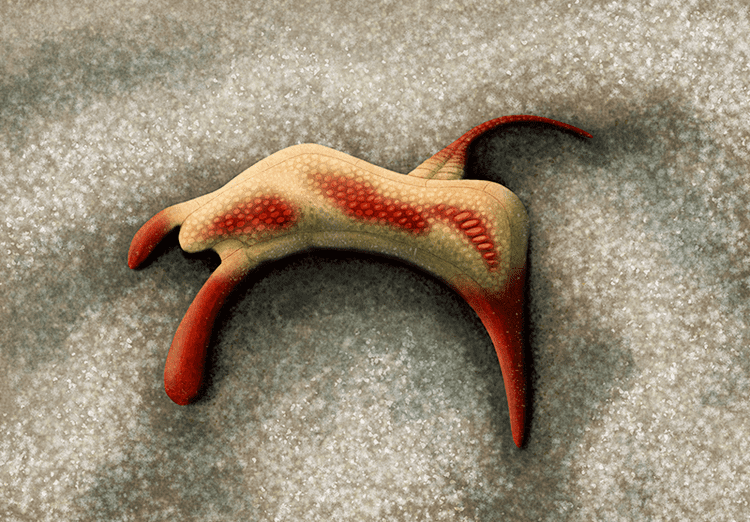 | ||
Similar Stylophora, Homalozoa, Carpoidea, Furcacauda, Canadaspis | ||
Cothurnocystis is a genus of small, enigmatic echinoderms that lived during the Ordovician. Individual animals had a flat, boot-shaped body and a thin, rod-shaped appendage that may be a stem, or analogous to a foot or a tail. Fossils of Cothurnocystis species have been found in Nevada, Scotland, Czech Republic, France and Morocco.
Contents
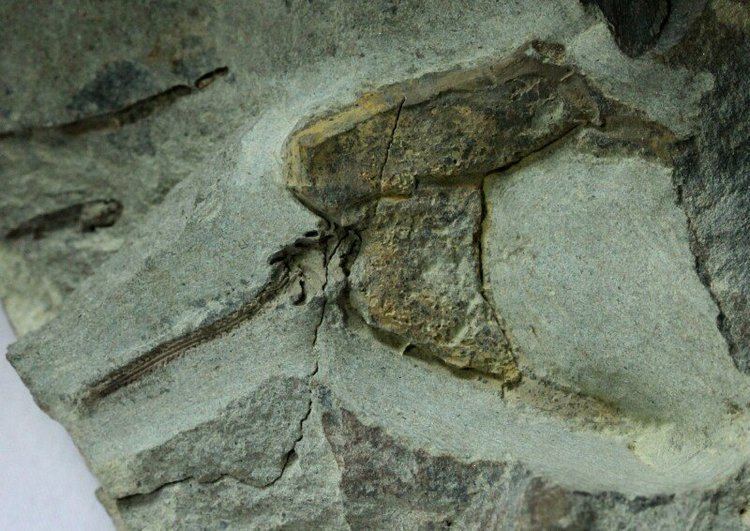
Taxonomy
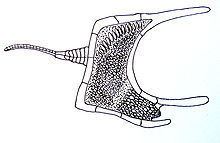
The position of the Stylophora, of which Cothurnocystis is a prominent representative, has been in a state of flux. Some scientists claim to be able to see a structurally very basic notochord in the tail, and consequently consider the Stylophora to be a group of primitive chordates, calling them the "Calcichordata". Alternatively these animals are considered related to echinoderms, as the shell (or test) is similar in structure and composition to the tests of echinoderms. However, stylophorans are asymmetric organisms that lack either the radial symmetry typical of most echinoderms, or the bilateral symmetry of the chordates.
Etymology
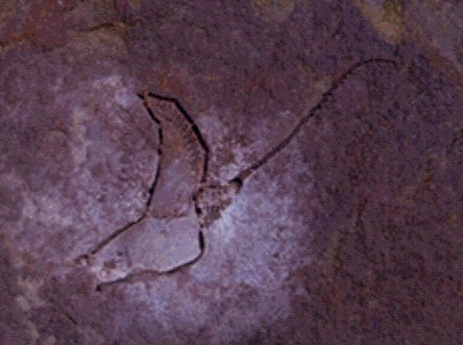
Distribution
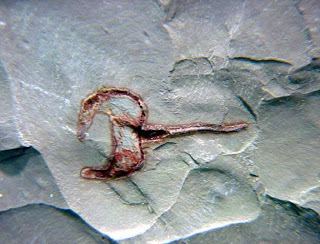
Description

The body of Cothurnocystis consists of a chalice (or theca) and a stem (tail or foot). The theca is fattened, boot-shaped and asymmetrical. The edges of the flat sides of the theca seem to consist of 14 elements, 11 defining the outline of the theca, and 3 are processes, one forming a "toe"-spike, a second a heel-spike and a third a lip-spike. The so-called "obverse"-side ("toe" pointing left), is covered with one thin integument, at the "reverse"-side the integument is interrupted by a "strut" formed by a branch of an element near the attachment of the stem, and a branch of an element at the top of the theca. Approximately from the attachment of the stem to the "toe"-spike, is a structure reminiscent of a windpipe, that has been interpreted as a series of slits in the integument. The attachment of the stem seems to consist of four sets of left and right elements, becoming narrower further from the theca. Further down single and uniform elements of the stem seem comparable to the anatomy of sealily stems. The "instep" of the boot seems to hold both the mouth and the anus.
